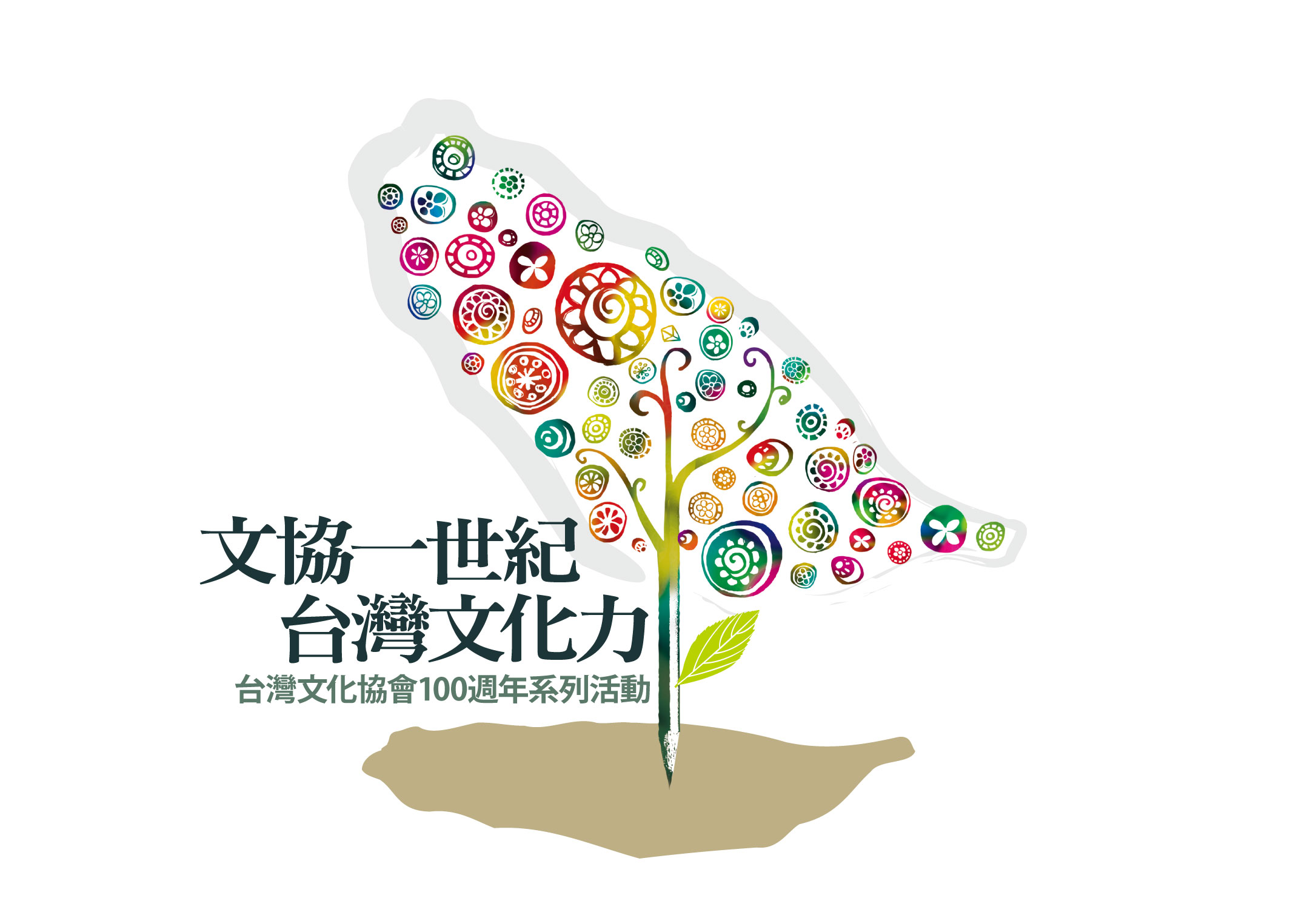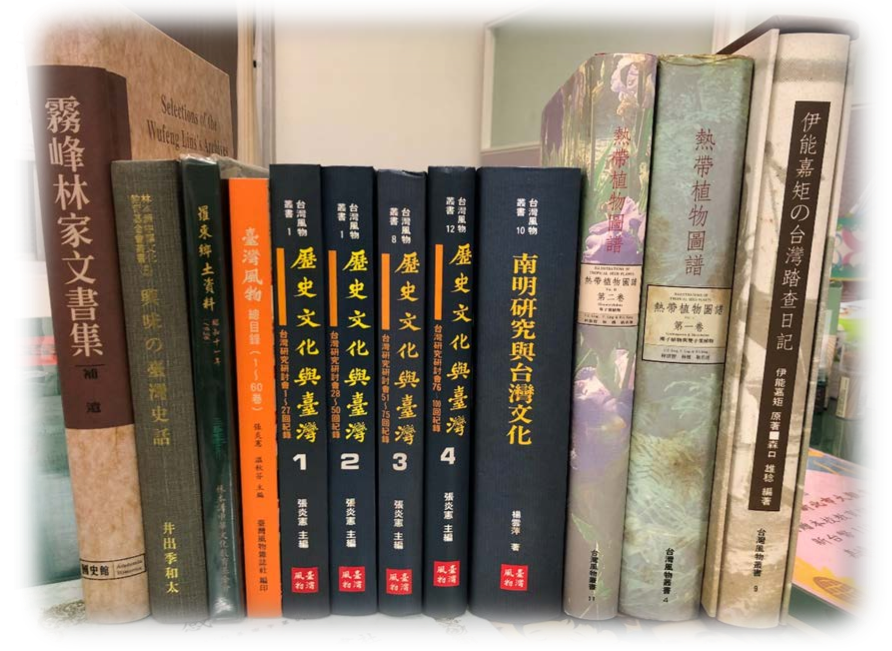
國姓爺的歷史與傳說
Koxinga: History and the legends
戴寶村/Tai Pao-tsun
(中央大學歷史系教授)
(Professor, History Department, National Central University )
2001-04-30  A portrait of Koxinga
A portrait of Koxinga
在台灣歷史上,鄭成功是第一個建立漢人政權的領袖。雖然他來台灣短短不到半年即生病去世,鄭氏政權亦不過二十幾年,但鄭成功並不因政治上的失敗而被納入流寇之輩。相反的,在台灣的民間傳說裡,他的一舉一動、為人處世都被描繪成聖蹟,供奉鄭成功的廟宇遍佈台灣,台灣人已將鄭成功當成共同開拓台灣的始祖。本週邀請中央大學歷史系教授戴寶村執筆暢談這位台灣歷史中的傳奇人物。
Koxinga (Zheng Chenggong) was the first HanChinese leader to hold political power in thehistory of Taiwan. Although he died less than ayear after his arrival in Taiwan, and the ruleof the Cheng family lasted only 12 years,Koxinga was not categorized as a roving banditbecause of political failure. On the contrary,in Taiwanese folk legend, his every action andinteraction with others has been depicted as that of a saint or a sage, and temples havebeenconsecrated to him all over Taiwan. The peopleof Taiwan see Koxinga as the original ancestorwho developed Taiwan. This week, we have invitedProfessor Tai Pao-tsun from the historydepartment at National Central University totell us about this legendary figure in Taiwanesehistory.
340年前的1661年4月30日,鄭成功統率的軍隊在台南鹿耳門登陸,圍困荷蘭人九個月之後,逼迫其離開殖民統治達38年之久的台灣,鄭成功想利用台灣為基地與清帝國對抗,不過在1662年即生病去世,東寧王國由其子鄭經繼承,到第三代的鄭克塽於1683年被清將施琅所敗降清而滅亡,鄭成功在台時間雖短,卻留下極多的故事與傳說。
340 years ago, on April 30, 1661, Koxinga lead armedforces ashore to Luerhmen, Tainan, and besieged theDutch for nine months, and then forced them out ofTaiwan, which they had ruled for 38 years. Koxingawanted to use Taiwan as a base for his resistanceagainst the Qing empire, but in 1662, he suddenlyfell ill and died, and his kingdom of Tung-ning wasinherited by his son, Zheng Qing, and then by thethird generation, his grandson, Zheng Keshuang, whowas defeated and overthrown in 1683 by a Qing generalnamed Shi Lang. Although Koxinga’s time in Taiwanwas short, he left behind many stories and legends.
出身與教育
鄭成功(1624-1662)是福建泉州府南安縣人,父親鄭芝龍(1600-1661)是一個海商兼海盜的人物,曾於1622年與顏思齊來過台灣北港,也和日本平戶有商業貿易往來,因此曾娶日本女子田川松為妻。1624年鄭成功出生,出生地的海濱仍有「兒誕石」的史蹟。鄭成功由母親田川氏獨力撫養至七歲,對其人格發展應有所影響,1630年鄭芝龍將他帶回南安教養,因受限於日本禁止女人離境的規定,故田川氏並未隨行,鄭芝龍延聘儒士教育鄭成功,以便爭取科考功名。
Family background and education
Zheng Chenggong’s (1624-1662) hometown was Nan’an,in Quanzhou, Fujian, and his father, Zheng Zhilong(1600-1661) was a maritime merchant and pirate, whoin 1622 came to Peikang in Taiwan with Yan Siqi,and often went to Hirato in Japan to trade. As aconsequence of this last connection, he married aJapanese woman by the name of Tamura Matsu. In 1624,Zheng Chenggong’ was born. The coastal area where hewas born still has a relic called the “childbirthstone.” Zheng Chenggong”s mother, Tamura, raisedhim on her own until he was seven, and had greatinfluence on the development of his personality.In 1630, Zheng Zhilong took him back to Nan’an forhis education. Because women were forbidden fromleaving Japan, Tamura was unable to accompany him.Zheng Zhilong engaged Confucian scholars to educateZheng Chenggong, so that he might be able to passthe imperial examinations.
國姓爺名字的由來
1644年明朝帝國滅亡,東南沿海地區陸續有福王、唐王、魯王、桂王等力圖抵抗以延續明帝國政權,唐王的勢力在福州,受到鄭芝龍的支持,又因唐王無男嗣,鄭芝龍乃安排鄭成功為唐王效力,帶有他日可取而代之的謀略,唐王亦需要鄭家的支持,將皇室的朱姓賜給鄭成功,所以一般民間稱呼鄭成功為「國姓爺」。
The origin of the name “Koxinga”
The Ming empire fell in 1644, but the coastalareas of the southeast, princes such as PrinceFu, Prince Tang, Prince Lu and Prince Gui,endeavored to fight back and prolong thepolitical power of the Ming empire. Prince Tanghad influence in Fuzhou, and received thesupport of Zheng Zhilong, and since Prince Tanghad no sons to succeed him, Zheng Zhilongarranged for Zheng Chenggong to serve him, andso he became known as “Guo-xing-ye,” which means”lord of the royal surname.” [The Dutch laterromanized the name as Koxinga]
父子理念不同,分道揚鑣
鄭芝龍並非誠心助唐王抗清,反而藉擁立有功作威作福,1646年清軍攻入福建,唐王被俘後死亡,鄭芝龍見南明無法成事而投降清朝,鄭成功曾與他苦勸論辯,仍無法改變其父親的投機行為,終於分道揚鑣各行其是。不久清軍攻入南安,闊別十多年後才從平戶前來團聚的母親田川氏受辱被殺,益發讓鄭成功對清朝產生不共戴天之仇恨,於是以廈門、金門為根據地,支持桂王(永曆帝)並接受其所冊封的「延平郡王」名號,在福建、廣東、浙江沿海與清軍作戰。
Father and son have different ideas and part company
Zheng Zhilong did not put his heart and soul intohelping Prince Tang resist the Qing, instead he usedhis position and achievements to throw his weight around,and in 1646, the Qing army attacked Fujian and PrinceTang was taken prisoner and died. Zheng Zhilong saw thatthe Southern Ming had no way of succeeding, andsurrendered to the Qing court. Koxinga had argued longand hard with his father, but it was impossible to gethim to change his opportunistic behavior, and in the endthey parted company, each going his own way. Not longafterwards, Qing troops attacked Nan’an. Koxinga’s motherTamura, from whom he had been separated for more than 10years, finally came over from Hirato, but was raped andkilled, which made Koxinga all the more implacable andbent on revenge towards the Qing court. Thereupon,taking Xiamen and Jinmen (Amoy and Quemoy) as his bases,he supported Prince Gui (Emperor Yongli), received fromhim the title of “Prince of Yanping Prefecture,” andwaged war against the Qing army in the coastal regionsof Fujian, Guangdong and Zhejiang.
 The last Dutch governor, FrederickCoijett, surrenders to Koxinga
The last Dutch governor, FrederickCoijett, surrenders to Koxinga
1658年5 月鄭成功統帥17萬水陸軍北上,擬進攻南京,然因與長江流域的張煌言無法全力合作作戰,清軍守城拒戰,鄭軍缺乏糧食補給,終而無功南返廈門。鄭成功認為單以金、廈難以長久抗清,加上清廷採取海禁政策,阻斷鄭軍的經貿財源,而鄭家原來就與台灣的荷蘭有過貿易往來,加上在台為荷人作事的何斌投奔至廈門,提供台南的軍情、地理形勢給鄭成功,於是接受參軍陳永華的建議,決定揮軍攻取台灣。
In May 1658, Koxinga commanded 170,000 amphibioustroops on a campaign to the north, and planned toattack Nanjing, but because he was unablecollaborate with Zhang Huangyan from the YangtzeRiver Basin and wage war with full force, the Qingarmy defended the city and prevented war. Koxinga’sarmy did not have enough food to feed itself, soultimately Koxinga did not attack Nanjing butinstead returned to Xiamen. Koxinga thought thatwith only Xiamen and Jinmen, it would be difficultto resist the Qing in the long term, and on top ofthis, the Qing court was using a policy of banningmaritime trade, which blocked financial resourcesfrom trading for Koxinga’s army. Koxinga’s familyhad traded with the Dutch in Taiwan in the past,and a man named He Bin, who worked for the Dutchin Taiwan, had come to Xiamen to seek shelter. HeBin apprised Koxinga of the military situation inTainan, and gave him information about thegeographical topography, whereupon Koxinga acceptedmilitary staff office Chen Yonghua’s suggestion thathe mobilize his army to capture Taiwan.
建立台灣歷史上第一個漢人政權
1661年4月底鄭成功率領約400艘戰艦2萬5千人的軍隊,由廈門經澎湖進攻台灣,30日上午鄭軍在今台南鹿耳門登陸,民間傳言鄭成功登陸之前曾因糧食不足,又受困沙洲登陸不易,乃在船頭焚香禱告媽祖,結果真的潮水大漲,鄭軍順利登陸,後來在登陸地點建廟奉祀媽祖,結果因為台南海岸地形變化激烈,土城子和南邊的顯宮裡兩地都有規模宏大歷史悠久的媽祖廟,兩地還曾為了那一地點是真正鄭成功的登陸地點而引發長期的爭論。
Establishing the first Han Chinese political rulein Taiwan’s history
In April 1661, Koxinga led around 400 warships and25,000 troops from Xiamen via Penghu (the Pescadores)to attack Taiwan, and in the morning of April 30,Koxinga’s army landed at what is now Luerhmen inTainan. Folk legend tells that before Koxinga cameashore, because they had run out of food, and sincesandbanks were making it difficult to come to shore,Koxinga stood on the bow of his ship and burnedincense to Matzu. As a result, the tide swelledand Koxinga’s army was able to come ashore smoothly.Later on, Koxinga built a temple which he dedicatedto Matzu on the spot where he had landed. Thetopography of the coast at Tainan has changeddramatically, so although Tuchengtsu and Hsienkungli,to the south both have large Matzu temples with longhistories, which of them is genuinely at the spotwhere Koxinga came ashore has long been a topic ofdebate.
鄭軍登陸後即圍困荷蘭人,經過數次攻防戰及書信往來,至1662年1 月底荷人決議和談投降,2月1日雙方簽訂合約,荷方留下在熱蘭遮城的物資財貨,私人財物及生活物品則可以攜離,官員、軍隊、平民均可自由安全離台,2月9日荷蘭末代總督揆一交出城鑰,率領2 千人的船隊返航巴達維亞,即雅加達,結束荷蘭在台灣38年的殖民統治,台灣歷史上第一個漢人政權正式建立。
After Koxinga’s troops landed, they immediately besiegedthe Dutch, and after numerous attacks, defenses andexchanges of written communication, at the end ofJanuary 1662, the Dutch resolved to negotiate andsurrender. On February 1, both sides signed a treaty.The Dutch left the goods and property behind at FortZeelandia, but all officials, soldiers and ordinarypeople were free to leave Taiwan, with their personalbelongings and supplies. On February 9, the last Dutchgovernor, Frederick Coijett, handed over the keys tothe fort, and led two thousand people back, by sea,to Batavia (modern-day Jakarta), thereby ending 38years of Dutch colonial rule in Taiwan, and formallyestablishing the first Han Chinese political rule inthe history of Taiwan.

Koxinga’s troops marching on fortZeelandia (rare Dutch Illustration,1669)
死因眾說紛紜
荷蘭人在2月初離台而鄭成功在6月底即亡故,關於他的死因說法很多,有謂他因1658年的南京之役挫敗,1662年初桂王被叛將吳三桂俘虜殺害,而且他個性燥烈對屬下嚴峻,受挑撥而叛離者多,加上菲律賓誤傳鄭成功將進取菲律賓,當地華人將作內應,引起西班牙人屠殺華人之慘事,令他難以釋懷。另外其父鄭芝龍因鄭成功反清而被流放東北,1661年底被殺於北京,清廷甚至派人破壞其先人祖墳,讓他悲憤異常。而鄭成功東來台灣後由長子鄭經監守廈門,鄭經與其弟之乳母陳氏有不倫之情,甚至生下一子,鄭成功大怒視為不可赦之亂倫行為,命部將前往廈門殺鄭經及陳氏母子,部將竟然抗命不從,讓他痛心憤怒,以致生病而亡故,事實上真正的死因應是罹患瘧疾所致,因台灣過去傳染病盛行,瘧疾奪人性命無數,鄭成功壯年早逝,瘧疾應是決定性的奪命殺手,前述的國事、家事背景原因無非是要強化「民族英雄」的神聖面貌而已。
Opinions divided on the cause of death
The Dutch left Taiwan at the beginning of February, andKoxinga died at the end of June. There are many differentexplanations concerning his death, some say that it wasbecause of his defeat at Nanjing in 1658, at thebeginning of 1662, Prince Gui was betrayed by Wu Sangui,taken prisoner and killed, or because Koxinga’spersonality was harsh, and he was severe with hisinferiors, and so many of his army deserted him. Thereis also the explanation that a false rumor reached thePhilippines, that Koxinga was going to invade and takethe Philippines, and local Chinese were acting as plants,which brought about a tragic massacre of Chinese peopleby the Spanish, and this made it hard for Koxinga to puthis mind at rest. There’s also the fact that his father,Zheng Zhilong, was sent into exile in the northeast,because his son had rebelled against the Qing, and at theend of 1661, he was put to death in Beijing, and the Qingcourt even sent people to desecrate his family’s ancestralgraves, all of which made Koxinga extremely upset andindignant. After Koxinga arrived in Taiwan, he left hiseldest son, Zheng Jing, to guard Xiamen. Zheng Jing hadan affair with his younger brother’s wet nurse, a womanby the name of Chen, and this liaison produced a son.Koxinga was furious, and considered this behaviorunpardonable, and he ordered an officer to go to Xiamenand kill this child. The officer unexpectedly disobeyedthese orders, causing Koxinga great distress and anger,with the result that he fell ill and died. In actual fact,the real cause of his death was most likely contraction ofmalaria, because the Taiwan of those days was rife withcontagious diseases, and malaria claimed countless lives.Koxinga died in his prime, and malaria must have been thefateful hand of death which took his life. The otherstories described above are simply the exaggerated legendsof a folk hero.
神化了的人物:有關鄭成功的傳說
鄭成功在台灣已變成為神聖化的歷史人物,因此各地有不同的傳說,如有他吃過的魚與螺,被稱作「國聖魚」、「國聖螺」,南投縣有國姓鄉。台中縣的草屯鎮傳說是鄭成功的軍隊行軍經過,因雨天軍隊休息時將草鞋上所粘的泥土敲抖下來堆成「草鞋墩」。台中大甲鎮的鐵砧山上有劍井,傳說是鄭軍行軍經過缺水飲用,鄭成功拔劍刺地成井冒出甘泉。另說台北鶯歌鎮的鶯歌石是因鄭軍行經該處,有老鷹吞雲吐霧作怪,結果被炮轟死而化為石頭,在三峽則變成為一座「鳶山」。基隆市的仙洞也有流傳山洞會自動流出白米供應鄭軍的糧食,只因取米士兵偷懶將山洞口挖大,從此不再有米流出的故事。這些神話故事反映鄭成功帶來漢人移民,台灣人乃將鄭成功當成共同開拓台灣的始祖,於是稱呼鄭成功為「開台聖王」,進而奉為神明來崇拜,台灣總共有63座開台聖王廟,台南市的「延平郡王祠」就是最具有代表性的一座。
Deified figure: legends about Koxinga
Koxinga has become a sanctified historical figure in Taiwan,and so many legends concerning him abound in different places.For instance, fish and snails that Koxinga ate are called”Koxing-fish” and “Koxing-snails,” and there is a village inNantou called “Kuohshing Hsiang” (“Koxing-Village”). InTsaotun Township, Taichung County, legend tells that Koxinga’sarmy passed through that place, and rested a while therebecause of rain, and the mud which they shook off their strawshoes piled up to become the Straw Shoe Mound. At Tachiah inTaichung, there is a hill called Anvil Hill, with a wellcalled the Sword Well. Legend says that Koxinga’s army passedby, in need of drinking water, and Koxinga used the point ofhis sword to pierce open a well, from which sweet water gushedforth. In Ying-ko, in Taipei County, there is the Ying-ko Rock.The story behind this is that Koxinga’s army passed throughthis place, where there was an old eagle who made mischief. Theeagle was shot by a cannon and was turned into stone, and becamethe “Eagle Hill” in Sanhsia. In Keelung there is a Fairy Cavewhere, so the story goes, rice flowed out of the cave to feedKoxinga’s army, but the soldiers became lazy and dug deeper intothe cave, and the rice stopped flowing out. These tales reflectthe fact that it was Koxinga who brought the Han Chinese toTaiwan, and Taiwanese people still see Koxinga as the originalancestor who opened up Taiwan, which is why he is known as the”sage king who opened up Taiwan,” and worshiped as a deity.Taiwan has a total of 63 temples devoted to this “sage king,”the most representative of which is Tainan’s “Shrine of thePrince of Yanping Prefecture.”
Edited by Hsu, Shiou-Iuan/ translated by Elizabeth Hoile
(李美儀編輯/何麗薩翻譯)









